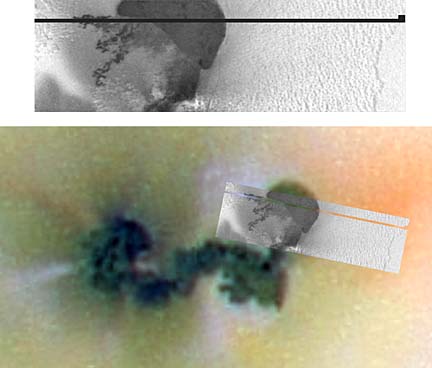

Jupiter moon reveals
Associated Press
Kilauea-like craterPASADENA, Calif. -- A volcanic crater photographed during the Galileo spacecraft's close flyby of Jupiter's moon Io is very similar to Hawaii's Kilauea, NASA researchers said.
Images of the Prometheus volcano released yesterday by the Jet Propulsion Laboratory were taken during an Oct. 10 flyby and were in a large batch of data now being transmitted to Earth.
The images were made by Galileo's camera and another instrument, the near-infrared mapping spectrometer, which picks up wavelengths invisible to the unaided eye.

"It appears that the Prometheus volcano on Io has characteristics remarkably similar to those of the Kilauea volcano in Hawaii, although Prometheus is much larger," said Laszlo Keszthelyi, a Galileo research associate at the University of Arizona."Both volcanoes are long-lived eruptions, with flows that apparently travel through lava tubes and produce plumes when they interact with cooler materials."
Prometheus has been active every time it has been seen in the past 20 years. Kilauea has been erupting for more than 16 years, except for a brief pause last month.
JPL said the spectrometer images show two distinct hot spots at Prometheus -- a large one to the west and a fainter, cooler one to the east. Numerous lava flows are shown near the western hot spot, allowing scientists to discern a crater 17 miles long and 9 miles wide near the hot spot to the east.
The caldera and eastern hot spot are associated with the vent where the molten rock rises to the surface. But after reaching the surface, the lava moves west through tubes for about 60 miles before breaking onto the surface again.
The vent at Kilauea consists of a lava lake about 330 feet across. From there, lava is transported 6 miles in lava tubes to the ocean, generating steam plumes.
The plume on Io is mostly sulfur dioxide and rises much higher than Kilauea's, 30-60 miles, because of the moon's low atmospheric density and gravity, according to Galileo scientists.